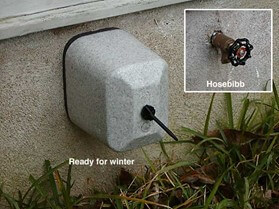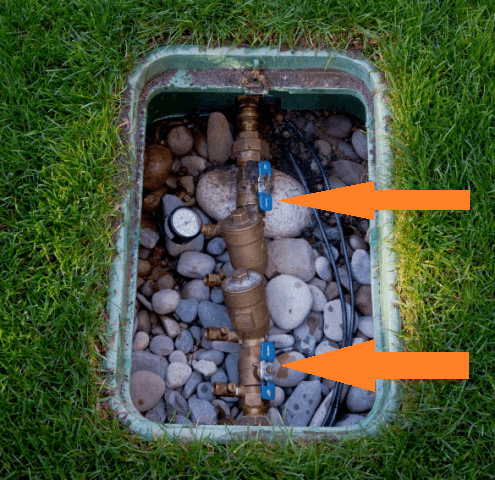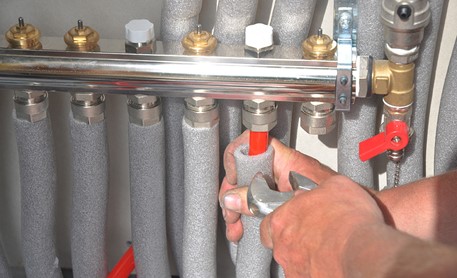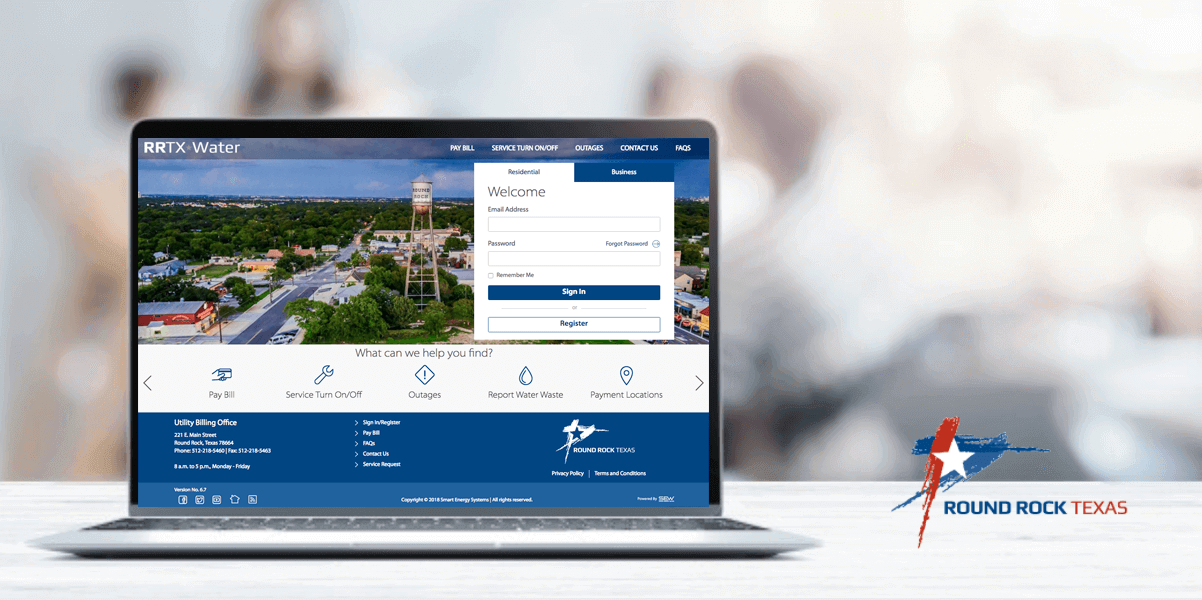Water leaks are sometimes inevitable and, unfortunately, something many people experience each year. You can’t help that an old tree’s roots cracked a water line or that the ground shifted and broke a pipe. Unlike these inevitable instances, you can prevent and prepare for water leaks that are caused by freezing temperatures. If temperatures are predicted to go below 28 degrees for more than 4 hours, it is time to prepare your home.
Outdoor faucet
Remember to protect outdoor faucets before freezing temperatures arrive by insulating them with covers. Inexpensive styrofoam faucet covers prevent heat from escaping and also prevent water from entering the faucet and freezing, expanding and breaking the spigot. If weather is predicted to be below 28 degrees for more than 4 hours, you should drain your outdoor faucet and then put the cover on.
How to drain your outdoor faucet:
1. Turn off your water supply valve which is located near the water meter near the street. (See video below)
2. Remove any hoses to your faucet and turn it on full blast and let it run until it trickles and stops to push out excess water from the pipes.
3. Once the water stops, turn the faucet back off, and turn your water supply back on.

How to turn off your water supply valve

Sprinklers
When winter weather is expected, turn off your sprinkler system and keep it off. Most plants go dormant during the winter anyway, so they do not need the extra water from sprinklers. If temperatures stay below 28 degrees for more than 4 hours, you can winterize your system by turning off the water to the system at the backflow prevention device and then run each zone to drain out the water in the lines. The steps for this are similar to draining your outdoor faucet.
- Locate the backflow prevention device or the main valve to the sprinkler system. Both are usually located very close to the water meter. The backflow is in a box that typically has a green, rectangular, plastic lid.
- Turn the water off to the system at the backflow device. Do this by turning one of the handles so that it is perpendicular to the metal device. In the picture, the handles of the backflow are blue. The arrows are pointing to the handles. It’s not necessary to turn them both, just one will be fine.
- Then manually run each station for a minute or less to blow/drain the rest of the water in the lines out; this eliminates the chance of any residual water freezing in the lines and causing pipe breaks or cracks.
Indoors
If we experience temperatures that go below 28 degrees for more than four hours, then it is best to keep indoor pipes warm and insulated. Open cabinets beneath kitchen and bathroom sinks to allow warmer air to circulate around pipes. Insulate pipes located in unheated places like the garage with pipe insulation. You can also wrap pipes in heat tape or heat cables with a thermostat control. The best pipe insulation for your situation will depend on your home. Seal or caulk cracks that might let in cold air, especially places where pipes run from inside to outside the home, such as dryer vents or water pipes.
Drip only if needed
When the temperatures drop to 28 degrees for more than 4 hours, it is time to let one faucet drip. The faucet you choose should be the one that is the farthest from your homeowner cut off valve. It does not need to be a running trickle — just enough to see water dripping. If you do drip your faucet, capture the water for future use.


Keep an eye on your water usage
Water leaks caused by extremely cold winter weather are are uncommon here in Round Rock, but it is not impossible! Remember to always keep an eye on your water usage after freezes to ensure that you do not have a water leak. You can do this by looking at your daily and hourly water use and make sure that water is not continuously flowing every hour. If you have not already, register to the customer portal at rrtxwater.com to ensure you do not have any leaks.


